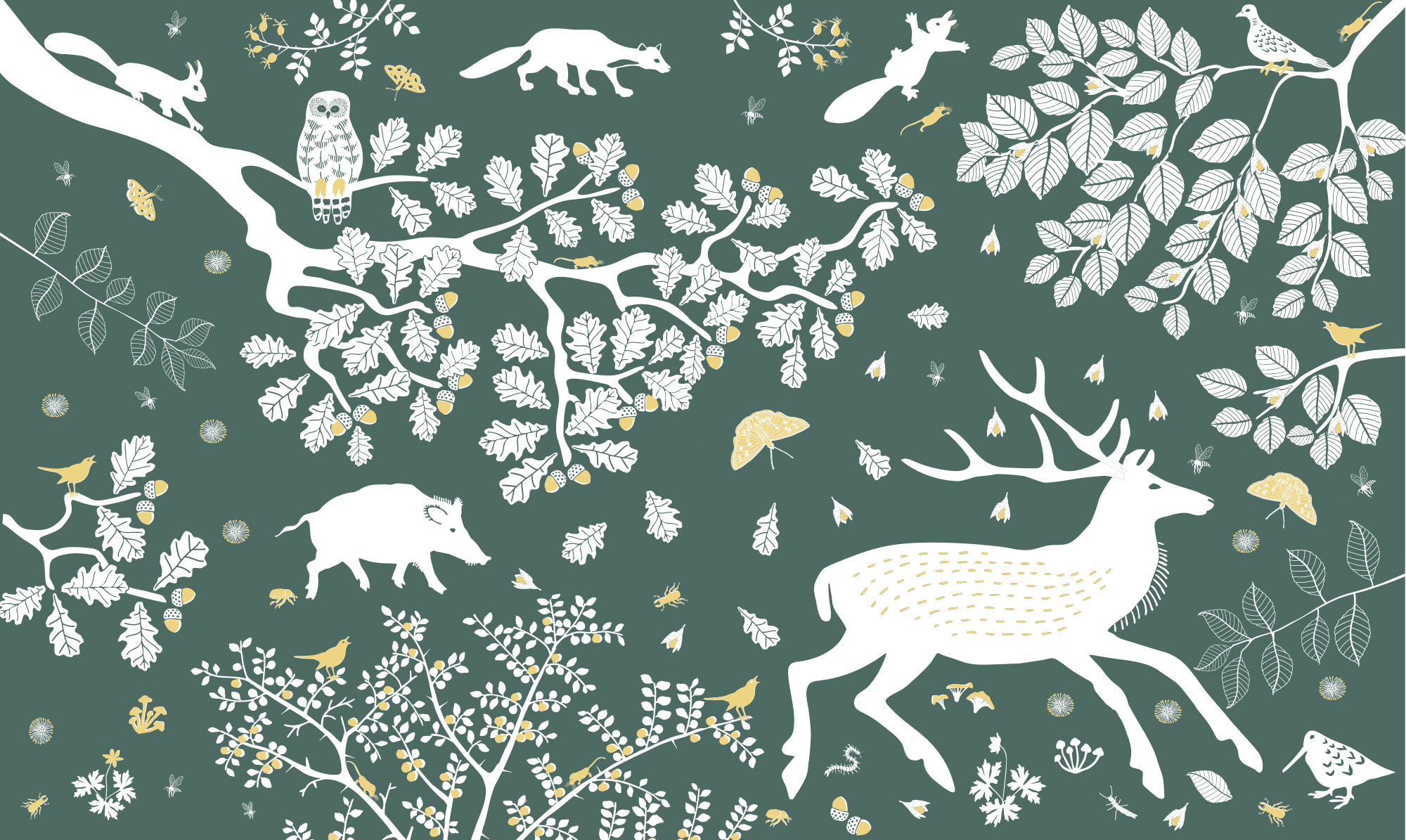
As a child of the savannah woodland, southern Africa, seeing a dung beetle rolling a well-formed ball of dung was an exciting experience, but not uncommon. On a farm, with a flock of blackhead Persian sheep, cattle, and a variety of wild animals, there was plenty of dung. Now, these encounters form a delightful corner in my mind. So much so, I was tempted to call my creative business Dung Beetle Design!
If you look closely at my Wilding environment print, for example, you will find lots of dung beetles. Go there. Find them just behind each animal where dung falls. Click on the magnifying glass at the top right. And count them if you like. They are there, providing vital eco services and acting as valuable eco indicators.
Dung beetles 101
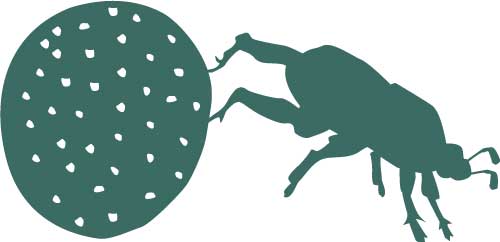
Dung beetles occur on every continent, except Antartica. Where there is animal dung, there are dung beetles. And if the dung is no longer there, the dung beetles disappear.
Dung beetles are coprids, from the Greek word ‘kopria’ which means manure. They rely on residual nutrients in dung, including essential amino acids and fatty acids. They secure their future by laying eggs into nutrient rich dung nests.
Not all dung beetles roll balls! In fact, there are three broad types:
- rollers (telecoprids): collect dung and roll it to an underground burrow
- tunnellers (paracoprids): build underground chambers beneath dung and carry it down
- dwellers (endocoprids): live within the dung itself.
Dung is a fleeting resource (animals move), so the beetles have to be quick, and fight for their portions. And, some dung beetles are dreadful thieves, – ‘kleptocoprids’!
Dung beetle eco services
If it weren’t for dung beetles we would probably be buried in animal poo and tormented by parasites and flies. They perform valuable services. They:
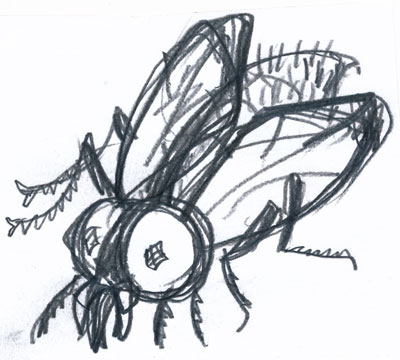
- clean up animal excrement
- reduce the breeding of animal parasites
- reduce the breeding of flies
- disperse seeds from fruit-eating animals, and provide nutrients for their healthy germination
- cycle organic matter into the soil
- aerate the soil, which increases porosity and water percolation
- create good conditions for soil microorganisms to thrive – earthworms, centipedes, nematodes, soil mites, soil bacteria, earwigs, slugs and springtails. (See Living Soil A5 Notebook in my shop )

All told, dung beetles play a critically important role in the wellbeing of wild places. They help enhance soils and domestic animal health because they reduce the need for fertilizer and chemical controls of flies and animal parasites. No wonder the Egyptians worshipped the scarab! Ancient farmers knew their value.
Dung beetle eco indicators
Today, environment scientists study dung beetle populations to monitor animal population diversity especially in forests and grasslands. As we know, human activity and modern farming practices have had a huge impact on nature and there are fewer and fewer truly wild places left.
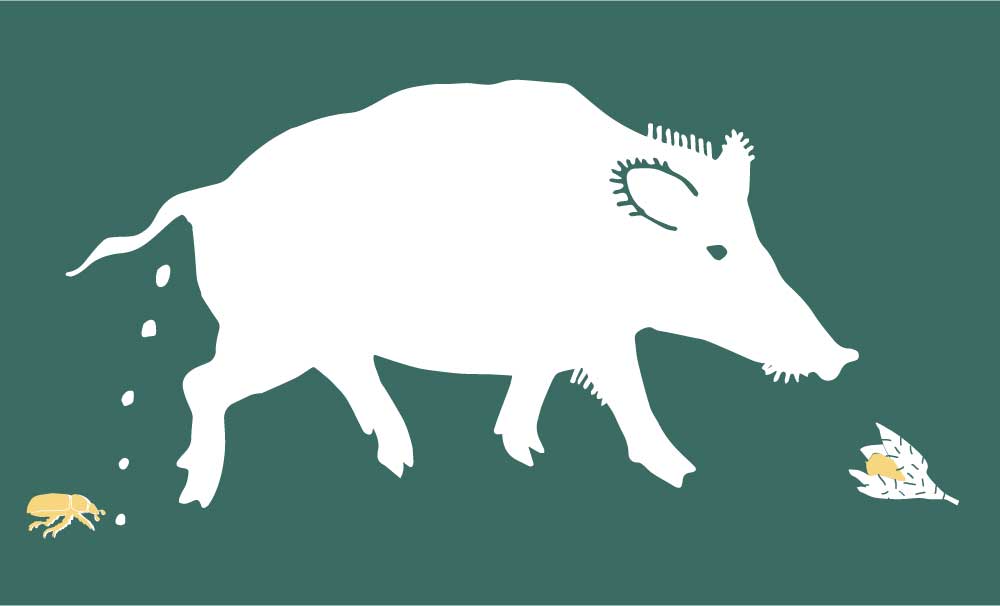
To survive, dung beetles depend on mammal populations. Most dung beetles are species specific, meaning they use the dung of a particular type of animal. This means that if an animal species is lost, the dung beetles, specific to that species, go too. In places, where wild animals and traditional small-scale farming have vanished, seeing a dung beetle is now rare. So, a decrease in dung beetle species can tell us that there is a loss of animal diversity.
Threats to dung beetles
- loss of animal diversity
- use of animal anti-parasitic pharmaceuticals (endectocides)
- use of pesticides
- use of animal antibiotics (dung beetles don’t do well on excreted anti-biotics)
- altered diets of farm animals – grain instead of grass, upsetting dung beetle dietary preferences
- altered breeds of domestic animals e.g., introducing European cattle to Africa, upsetting the dung beetles that prefer African cows
- monoculture and agribusiness.
My hopes
My main hope is that you have enjoyed finding out about dung beetles. They have a special place in my heart. But more than that, I hope you can see how important these humble and fascinating beetles are to life on Earth. If you haven’t thought about them much before, I hope this piece triggers questions about how we farm, care for soil, and consume the Earth’s gifts. It’s not always easy to see, from our modern houses in built up places, just how our way of life impacts on nature. And my aim is to raise my own awareness and share it with others through my art, design and writing.
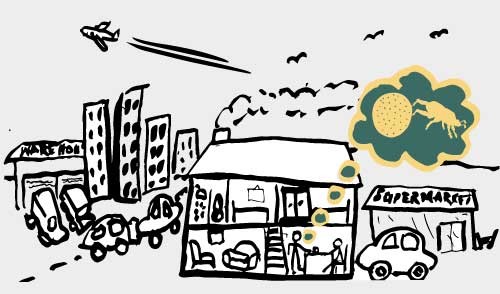
A Reader’s comment
Lovely Ann! I do love a dung beetle myself. Its quite astonishing to think of these silent services rendered to the earth and that they keep us going. God bless the dung beetles of the earth.
Bridget Krone, author of Small Mercies, South Africa
